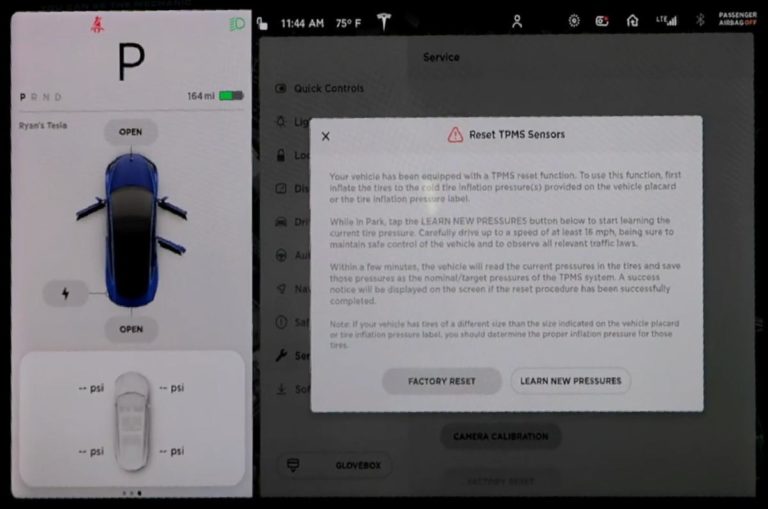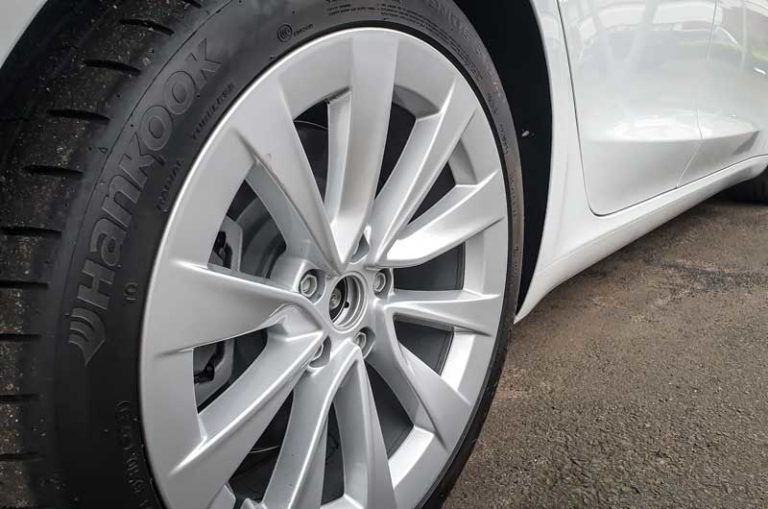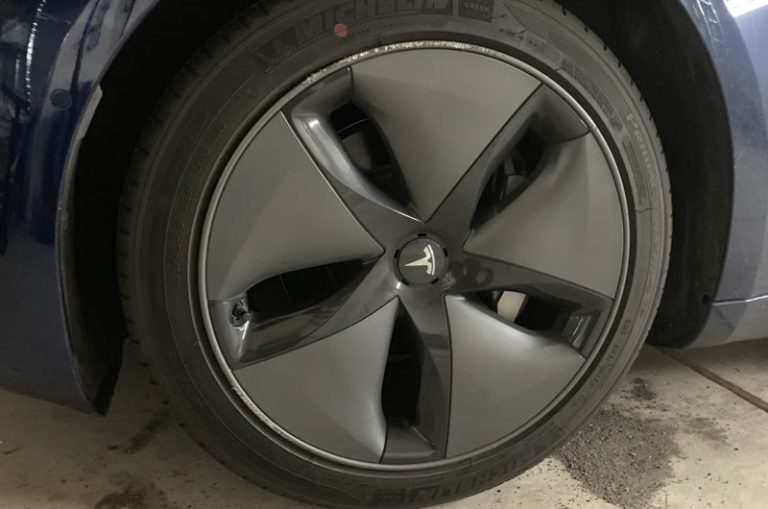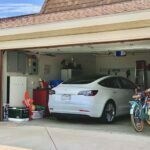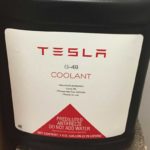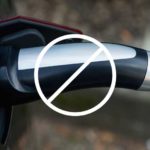The Tesla Model 3 does weigh more than the average car of its size (compared to ICE cars). This, together with the model and the enormous amount of torque it often churns out (when you like to flex your throttle foot) can have a bad effect on tire lifespan. So, what is the average mileage on Tesla Model 3 tires?
The Tesla Model 3’s tires should be good for anywhere between 20,000 and 40,000 miles (32,000 and 64,000 km). Factors such as Load support, Tire type, Proper maintenance, Driving style, and Environmental conditions can put its lifespan outside the above-mentioned range.
Check out the rest of the article to learn more.
- 5 Factors That Affect Your Tesla Tire's Lifespan
- Signs Your Model 3's Tires Need Replacement
- Picking Replacement Tires for Your Tesla Model 3
- Do Teslas Come With A Spare Tire?
- Do Teslas Have Run Flat Tires?
- Does Mileage Matter On A Tesla?
- How Much Are Tesla Tires?
- Does Costco Replace Tesla Tires?
- Does AAA Change Tesla Tires?
- How Long Do Tesla Tires Last?
- Frequently Asked Questions
5 Factors That Affect Your Tesla Tire’s Lifespan
The factors that determine how long your tires will last include:
1. Load Supported
The distribution of weight across your tires affects the pressure acting on them. In other words, the greater the load on the tires, the greater the wear and tear they experience. Conversely, a lower vehicular load means your tires will see less stress.
So, a Model 3 with a heavier battery pack (like the Performance or Long Range models) will run through tires faster than a Standard Plus on average.
Note that the diameter of your tires will also affect load-bearing. Loads will be greater on smaller tires than on larger ones with the same vehicular load. So, while a 19-inch tire is more expensive than an 18-inch tire with identical specifications, it may last longer.
Similarly, check out this related article I wrote about the Best Tesla Model 3 Replacement Tires. I discussed the best overall tires with Range & Value as comparisons.
2. Tire Type
Aside from the size of the tire, other characteristics have a bearing on how long tires last. Most of this information is printed on the side of tires, as required by law. This page of the Model 3 Manual lists how to read these numbers.
Tire specifications that affect the lifespan of your tires include:
- Load rating. A greater load rating will mean less strain on your tires.
- Treadwear grade. The higher a tire’s treadwear grade, the longer it will take to wear out.
- Traction grade. The greater the traction offered by the tire, the slower it will wear out.
- Temperature grade. The higher the temperature rating of the tire, the greater its expected longevity.
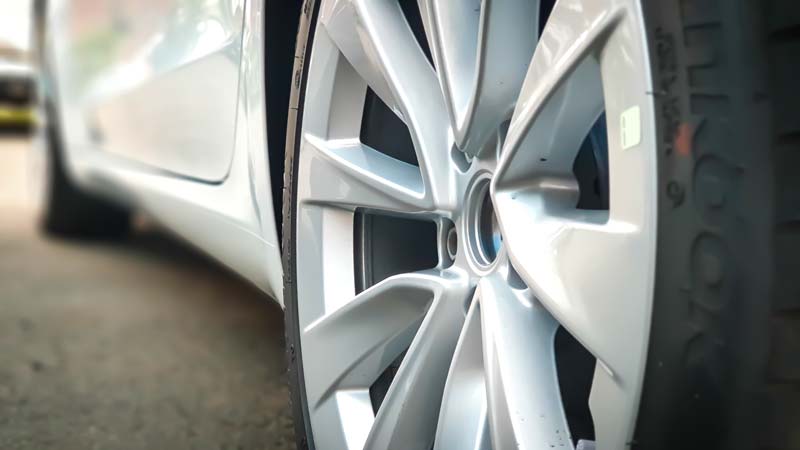
Winter Tires vs. Summer Tires
Apart from these quantifiable aspects, a tire’s weather and performance rating will also make or break its longevity. Tires generally come with the following ratings:
- Summer: These have less traction and will wear out faster than winter tires when used in similar environments.
- Winter: These offer greater traction and will last longer in the same environment.
- All-weather: These are in-between summer and winter in terms of traction.
- Performance: These are optimized for handling, not traction, and tend to wear out quicker.
For a more in-depth explanation of the differences between summer, winter, and all-weather tires, check out the following YouTube video:
Also, the front tires in an all-wheel-drive Performance or Long Range Model 3 will wear out faster than its rear tires because of the greater pressure they regularly experience. Similarly, the rear tires on a rear-wheel-drive Model 3 Standard Plus will wear out faster than its front tires.
Of course, other qualitative aspects — such as the brand, materials, and manufacturing technology — also affect how long tires last.
3. Proper Maintenance (or the Lack Thereof)
To get the most out of your Model 3’s tires, you need to care for them properly. For instance, inadequately inflated tires will wear out faster than tires whose air pressure is consistently maintained at the recommended levels. As already mentioned, front and rear tires may wear out at different rates.
The Tesla Model 3 Manual has detailed instructions for the proper maintenance of tires. It recommends maintaining a tire pressure of 40-45 psi and swapping front and rear tires every 6,250 miles (10,000 km) or if the difference between threads is greater than 2/32 in (1.5 mm).

How To Check Tire Pressure Tesla Model 3
Checking the tire pressure of your Tesla Model 3 is essential for ensuring safe driving and fuel efficiency. It’s important to get into the habit of regularly checking your tires, as it can make a big difference in terms of both performance and safety. Here’s how to do it:
First off, you’ll need a tire pressure gauge. You can buy one from any auto parts store or online retailers like Amazon.
Once you’ve got your gauge, locate the four Tire Pressure Monitoring System (TPMS) sensors on each wheel well. These will give you accurate readings that are specific to each tire.
To take an accurate reading with the gauge, press down firmly onto the valve stem until you hear air hissing out. Take note of the numbers displayed on the gauge – this is what your current tire pressure is set at.
Make sure to measure your Tesla’s tire pressure when it is cold.
You’ll find the recommended pressure in your owner’s manual.
What Is TPMS?
TPMS stands for Tire Pressure Monitoring System. It’s a safety feature in your Tesla that keeps an eye on your tire pressures. Every month, when the tires are cold, make sure to check and inflate them to the recommended pressures mentioned on the Tire Information label inside the driver’s door pillar.
The TPMS comes into action as an added safety measure. If any tire is significantly under- or over-inflated, a tire pressure warning (Tire Pressure Indicator) appears on the touchscreen. When you see this warning, stop and check your tires as soon as possible, and adjust the pressure accordingly. Driving with significantly under-inflated tires can lead to tire overheating and failure, reduce range efficiency, and affect handling and braking.
Keep an eye out for the amber TPMS indicator when starting your Model 3. If there’s a TPMS fault, the indicator will flash for one minute during startup.
Remember, the TPMS is not a substitute for regular tire maintenance. You should manually check tire pressures and inspect their condition regularly to ensure your safety on the road, even if the TPMS hasn’t triggered a warning. Also avoid installing accessories not approved by Tesla, as they could interfere with the TPMS system.
How To Reset Tesla Tire Pressure
To reset the tire pressure on a Tesla Model 3, first check that all four tires are at an equal pressure level (in accordance with vehicle manufacturer’s specifications).
Then use a quality air pump or compressor to inflate each wheel until reaching the desired PSI. Be sure to double-check after inflation that all four wheels have been adjusted correctly before driving away.
Where To Get Tesla Tires Rotated
If you’re looking for a reliable place with certified technicians who understand the unique needs of electric vehicles, head over to one of the many Tesla Service Centers across the country.
Not only do they specialize in servicing Teslas but also have expertise around battery technology and other features specific to electric cars.
But keep in mind that having your tires rotated at an authorized service center may cost more than going to a local shop or garage since it involves specialized knowledge and equipment.
On the flip side, if you’d rather take a DIY approach and avoid paying extra fees for specialized services, then consider doing the job yourself!
There are lots of tutorials online about changing and rotating tires on Tesla models like the Model 3 which can provide helpful tips on how-to safely perform this task.
Plus, when done correctly, it could save you time and money in the long run—and maybe even extend your car’s tire life too!
4. Driving Style
An aggressive driving style is another factor that can cause significantly greater tire wear and tear. Examples of this include:
- Driving excessively fast
- Accelerating or braking hard
- Taking fast turns
- Hitting the curb when parking
5. Environmental Conditions
The lifespan of your Model 3’s tires can likewise be affected by environmental factors, such as:
- Temperature: Prolonged exposure to high temperatures will adversely affect the life of your car tires.
- Humidity: High exposure to water, snow, or moisture can shorten the life of your tires.
- Terrain: Driving off-road, on rough ground, or on badly tarred and potholed roads can all put excess stress on your tires.
Signs Your Model 3’s Tires Need Replacement
Tire Damage
The most obvious sign that your Model 3 needs a tire change is a flat tire. Although punctures under ¼ in (6 mm) can be temporarily patched over, in most cases, you’ll need to replace your tires ASAP.
If you’d rather not replace all your tires at once, you can replace only one pair — but only if you’re sure it won’t significantly affect the performance of your vehicle.
Wear and Tear
Your Model 3’s tires have wear indicators woven into their tread patterns. When the tires wear down to 3 mm (4/32 in), these patterns will show, indicating that it’s time for a tire change.
According to Tesla, treads less than 3 mm (4/32 in) pose a risk of hydroplaning under wet conditions.
You can use this online Tesla tire calculator to find how long any Tesla Model tire will last. You can also estimate the number of miles left on your current set and how many days you have until they need to be swapped out for new ones. If that is the case, you can also find the price for any set of Tesla tires by selecting the appropriate tires. Have fun!
Picking Replacement Tires for Your Tesla Model 3
The Michelin Primacy MXM4 tires that a Model 3 Standard Plus comes with cost almost $1,400 for an entire set of four. However, it’s not necessary to replace them with the same tires. The following table lists the specifications of the Michelin Primacy MXM4 tire.
| Specification | Value |
| Tire Category | P (Passenger) |
| Width | 9.25 inches (235 mm) |
| Tire Construction | R (Radial Ply) |
| Wheel Diameter | 18 inches (457 mm) |
| Load Index | 98 |
As long as your replacement tires meet or exceed the same specifications, you have plenty of options to choose from.
For example, a search on Simple Tire shows that tires with a warranty of between 50,000 and 60,000 miles (80,500 km and 96,560 km) meet these specifications.
Pro Tip: Can you get a Tesla tire warranty at any time?
The weight of Teslas can be pretty hard on Michelin tires. If you have the Michelin tires you can get some money back from them if you have some issues before the warranty comes up. You can go to any certified Michelin dealer and have them write a note where the wear and tear is together with the mileage on your car. You can then call Michelin customer service, and they will give you a check for the difference. You can also get a discount on the tires from the place where you got the tires.
Do Teslas Come With A Spare Tire?
Have you ever wondered if Teslas come with a spare tire? Well, the answer is both yes and no.
While Tesla does not provide a full-sized spare in the trunk of their cars, they do offer something called Tire Protection Plan (TPP). This plan provides roadside assistance for flats or other tire issues and includes access to free loaner tires when needed.
But how long will those tires last? Tesla Model 3 tires are estimated to last between 20,000 – 40,000 miles depending on factors such as road conditions, driving style, and climate.
Do Teslas Have Run Flat Tires?
No, Tesla does not use run flat tires. However, the tires that come standard with a Tesla are of very high quality. When replacing your Tesla’s tires, you should opt for a brand of equal quality to make sure that you get a maximum driving experience out of your Tesla.
Does Mileage Matter On A Tesla?
Typically, Tesla Model 3 tires last anywhere from 25,000 to 60,000 miles. This range depends on a few factors such as road conditions, weather patterns, driving habits and tire maintenance.
It’s important to note that the more you drive your Tesla Model 3 in wet or snowy conditions, the less mileage you’ll get out of its tires. While Teslas don’t have run-flat tires like some other vehicles do, they come with roadside assistance coverage for flat tires.
If you ever find yourself stranded with a flat tyre while operating your Tesla Model 3, contacting their customer service should be your first step. They can provide details about how much it will cost to replace the tyre and what services are covered by their roadside assistance program.
How Much Are Tesla Tires?
It is impossible to give a standard figure of how much a tire for your Tesla will cost. The cost depends on several factors, including brand, tire type and tire size.
For example, the type of tire matters – whether it’s an all-season or performance model. All-seasons tend to be more affordable but will wear out faster than their performance counterparts due to less grip and softer rubber compounds.
On the other hand, performance tires offer superior handling for spirited driving but come at a higher price tag and may not last as long either.
Does Costco Replace Tesla Tires?
Costco does not replace Tesla model 3 tires directly but there is a program that allows customers to purchase new tires at a discounted rate from authorized vendors and have them installed by Costco’s auto service technicians.
Additionally, Costco offers free tire balancing services for all four wheels which will help ensure your vehicle gets optimal performance out of its tires.
So while you won’t find direct replacement for your Tesla model 3’s tires at Costco, their automotive services team can certainly help extend the life of your current set.
Does AAA Change Tesla Tires?
The answer to the question of whether or not AAA will change a Tesla Model 3 tire is a bit complicated. It depends on several factors, including your location and if you have an appropriate service plan for your Model 3.
Generally speaking, however, most AAA locations do not directly change out tires on electric vehicles like Teslas.
That said, many AAA locations are able to help in other ways when it comes to tire maintenance or replacement needs. They may be able to provide assistance with finding a qualified technician who can replace the tires of your Model 3 as well as helping you source new ones if necessary.
Additionally, they might also offer discounts on certain services or products related to maintaining and replacing tires on Teslas. Ultimately, while they cannot directly assist with changing out the tires themselves, they should still be an invaluable resource when it comes to ensuring that your car’s tires remain in peak condition over time.
How Long Do Tesla Tires Last?
Tesla recommends replacing tires every six years, or sooner if required. When it comes to the lifespan of Tesla tires, several factors can influence how long they last.
How Many Miles Do Tesla Tires Last?
On average, you can expect Tesla tires to hold up for around 20,000 to 40,000 miles, but this can vary depending on a few things. Your driving habits play a role – aggressive driving, frequent hard braking, and rapid acceleration can wear out tires faster. The condition of the roads you drive on also matters; rough or poorly maintained roads can be harder on your tires.
To make your Tesla tires last longer, proper maintenance is crucial. Regular tire rotations, keeping the tires properly inflated, and getting wheel alignments as needed can help extend their life. The type of tire you choose is another consideration; there are all-season, summer, and performance tires, each with different wear characteristics.
Climate can also play a part – extreme temperatures, whether hot or cold, can impact tire wear. It’s a good idea to consult your vehicle’s owner’s manual for specific recommendations from Tesla on tire maintenance and replacement intervals for your particular Tesla model. By taking care of your tires and driving responsibly, you can ensure you get the most mileage out of them and stay safe on the road.
Frequently Asked Questions
Why Is Tire Choice Especially Critical in Electric Vehicles?
What Tire Technologies Can I Expect in the Future?
Check out these 20 great gift ideas for yourself or a Tesla fanboy.
Contact Us if you have any questions or queries.


